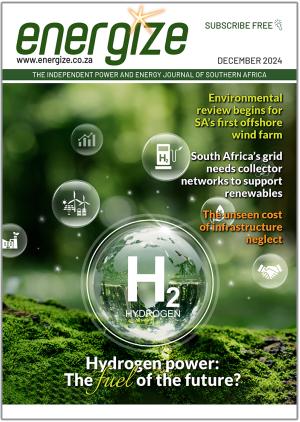South Africa is moving towards renewable energy and the country’s climate (an abundance of sun and wind) and geography (large land expanses) are well-suited for a hydrogen economy. Green hydrogen is not only a zero-carbon energy carrier; it is also an enabler and thus the basis for all other green technologies. It can be used to create a suite of products including green methanol, green ammonia, explosives, synthetic fuels, and synthetic natural gas.

Nithesh Mohun, a senior sales engineer at thyssenkrupp Uhde points out that getting green hydrogen to countries in Europe for example, poses a challenge, explaining that gaseous hydrogen takes up more space than liquid hydrogen. Transporting large quantities of it in gas form is not feasible. We therefore look to hydrogen carriers as an alternative. When we combine green hydrogen with carbon dioxide, we produce green methanol, which is a feasible energy and hydrogen carrier.
In addition to a solid knowledge platform in green hydrogen, the company has been active in the methanol process industry for many decades and owns world-class synthesis gas generation technologies. It recently reinvented its methanol business by adding the AdWinMethanol technology to its portfolio. Mohun explains that this advanced technology is capable of producing methanol in quantities exceeding that of any available conventional technology.
“Our green methanol technology is suitable for all commercial capacities ranging from ten to multiple thousands of tons of CO2 based methanol per day,” adds Mohun.
However, there are two main challenges around the use of renewable energy: The fluctuation of supply and the large distances between the locations of production and use of renewable energy, which causes considerable transmission losses. These challenges can be overcome through energy storage and carrier solutions such as methanol. As methanol provides the opportunity to store green energy in terms of green fuel, it is highly suitable as a high-density energy carrier.
Mohun says that within the firm’s methanol plants, hydrogen is produced via water electrolysis. The carbon dioxide required for the methanol synthesis can be sourced from a flue gas recovery unit or a biogas or bioethanol plant. Both gases are mixed and sent to the methanol synthesis section at a pressure of 60 to 80 bar. Reactor temperatures between 210°C and 270°C have to be realised to progress the methanol reactions. Crude methanol is then purified in the methanol distillation section to achieve the desired methanol specification.
The firm’s methanol reformer technology is available if there is a requirement to convert the methanol back to hydrogen. In the methanol reforming unit, a mixture of methanol and water is pressurized to approximately 20 bar, vaporized and then heated to a temperature of 250° – 360°C. The hydrogen that is created is then purified to the required specification through the use of pressure swing adsorption (PSA).
Contact Nithesh Mohun, thyssenkrupp uhde, Phone 011 236-1000, nithesh.mohun@thyssenkrupp.com , www.uhde.co.za















